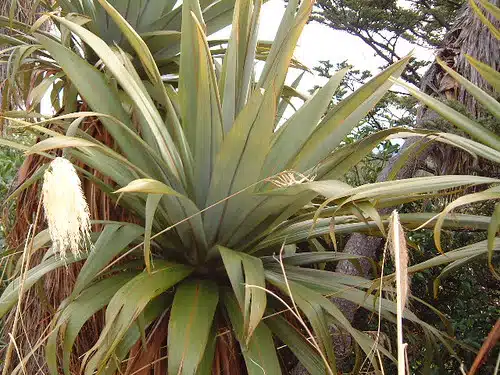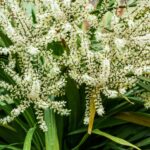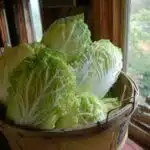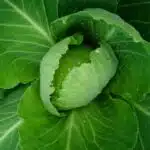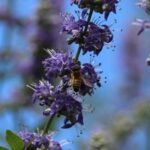Cordyline indivisa, commonly known as cabbage tree, is a striking ornamental plant with its large, sword-shaped leaves and impressive size. Native to New Zealand, this evergreen shrub or small tree grows up to 10 meters tall and 3 meters wide. It is widely cultivated for its attractive foliage that adds a touch of exoticism to gardens and landscapes.
Growing cabbage tree can be a rewarding experience for horticulturists who love to experiment with different varieties of plants. However, it requires some knowledge and skills to ensure optimal growth conditions. In this article, we will explore the different aspects of growing Cordyline indivisa, from selecting the right location to caring for the plant throughout its life cycle. Whether you are a novice or an experienced gardener, the following tips will help you grow healthy and beautiful cabbage trees that will enhance your outdoor space.
Introduction To Cordyline Indivisa
In the world of horticulture, Cordyline Indivisa is a popular and visually stunning plant that belongs to the Asparagaceae family. This evergreen tree is native to New Zealand’s lush forests, where it thrives in moist soil and mild temperatures. The cabbage tree, as it is commonly known, can grow up to 20 meters tall and has long green leaves that resemble those of a palm tree.
Cordyline Indivisa boasts numerous benefits that make it an excellent choice for any garden enthusiast. With its lovely foliage, the plant creates an attractive focal point in any outdoor space. Additionally, the cabbage tree is relatively low-maintenance and can tolerate various soil types, including clay and sand. Its hardiness also makes it resistant to pests and diseases.
There are several varieties of Cordyline Indivisa available today, each with unique features that cater to different preferences. Some cultivars have darker leaves or more compact growth habits than others. Regardless of the variety you choose, understanding cabbage tree’s growing requirements is essential to ensure optimal growth and health for this beautiful plant.
Understanding Cabbage Tree’s Growing Requirements
Sunlight is essential for cordyline indivisa (cabbage tree) growth as it requires full sun to partial shade. Soil should be well-draining and slightly acidic for optimal growth. Watering should be moderate and consistent in order to maintain soil moisture. Temperature should be between 10-30°C for optimal growth.
Sunlight
Caring for indoor plants can be a fulfilling experience, especially when it comes to growing the cordyline indivisa or cabbage tree. One of the most crucial factors in its growth is sunlight. This plant requires abundant light exposure, which means it needs at least six hours of direct sunlight every day.
While some plants may thrive in shaded areas, the cabbage tree is not one of them. It needs ample sunlight to produce lush green foliage and maintain a healthy appearance. However, if you’re growing this plant indoors, make sure to place it near a south-facing window where it can receive enough light throughout the day. Remember that even though this plant loves the sun, it’s still essential to provide adequate shade during hotter months to prevent scorching.
In conclusion, understanding the sunlight requirement of cordyline indivisa is essential to its growth and maintenance. As a horticulturist, you must ensure that this plant receives enough light exposure by placing it in a well-lit area or near a south-facing window when grown indoors. Make sure also to provide shade during hotter months to prevent leaf scorching and keep your cabbage tree thriving all year round.
Soil
Understanding the growing requirements of cabbage trees is essential in ensuring their healthy growth and development. Aside from sunlight, another crucial factor that significantly affects the plant’s growth is the soil quality. The right soil pH level is vital for cabbage trees to absorb necessary nutrients and minerals beneficial for their overall health.
The ideal soil pH level for cabbage trees ranges between 6.0-7.5, which indicates a slightly acidic to neutral soil condition. It’s best to perform a soil test before planting the cabbage tree and adjust the pH level accordingly. Composting techniques can also help improve soil quality by enriching it with organic matter that can boost its fertility and texture.
To maintain optimal soil conditions, horticulturists recommend using a well-draining potting mix when growing cabbage trees indoors or outdoors. This type of soil promotes good air circulation around the roots and prevents waterlogging, which can lead to root rot. By providing appropriate soil conditions, your cabbage tree can thrive and provide an aesthetically pleasing addition to your indoor or outdoor garden space.
Choosing The Right Location For Cabbage Tree
Sunlight exposure is crucial in the growth of cordyline indivisa. This plant requires full sun to thrive and produce optimal growth. It is best to choose an area in your garden that receives direct sunlight for at least 6 hours per day. However, if you live in a region with intense heat, it is advisable to provide some shade during the hottest part of the day.
Climate considerations are also important in growing cabbage tree. Cordyline indivisa prefers a cool climate with mild temperatures ranging from 10-24°C (50-75°F). If you live in a hot and dry region, it may be challenging to grow this plant without proper care and maintenance. Consider planting cabbage tree in a location where it can receive protection from harsh winds and extreme temperature fluctuations.
In summary, selecting the right location for your cabbage tree should involve careful consideration of sunlight exposure and climate conditions. This will ensure optimal growth and healthy development of your plant. In the following section, we will discuss soil preparation for optimal growth, which is another vital step towards successful cultivation of cordyline indivisa.
Soil Preparation For Optimal Growth
After selecting the right location for your cabbage tree, it’s time to prepare the soil for optimal growth. Soil preparation is a crucial step in ensuring that your plant thrives and produces healthy foliage. The cabbage tree requires well-draining soil with plenty of organic matter.
To prepare the soil, start by removing any weeds or rocks from the planting area. This will eliminate competition for nutrients and ensure that the roots can grow freely. Next, add organic matter such as compost or aged manure to improve soil structure and fertility. Composting tips include mixing green and brown materials, maintaining a balanced ratio of carbon to nitrogen, and turning the pile regularly to aerate it.
Soil pH levels are also important when planting cordyline indivisa. These plants prefer slightly acidic soil with a pH range of 6.0-6.5. If your soil is too alkaline, consider adding sulfur or peat moss to lower the pH level. On the other hand, if your soil is too acidic, add lime to raise the pH level.
By following these soil preparation tips, you can ensure that your cabbage tree has everything it needs to thrive in its new home. In the next section, we’ll discuss how to plant cordyline indivisa for optimal growth and aesthetics without disturbing its fragile rootsystem.
Planting Cordyline Indivisa
Planting Cordyline Indivisa requires specific techniques to ensure optimal growth and development. Before planting, assess the soil quality and choose a location with well-draining soil that is slightly acidic. The best time to plant is in spring or fall when temperatures are mild.
To propagate Cordyline Indivisa, take stem cuttings of about six inches long from the mother plant. Cut at an angle just below a node, remove the lower leaves, and dip the cutting in rooting hormone before planting it in a pot filled with moist potting soil. Keep the soil consistently moist and warm until roots develop.
When planting Cordyline Indivisa directly into the ground, dig a hole twice as wide as the root ball and deep enough for the plant to sit at its original level. Add compost or organic matter to enrich the soil, and gently spread out the roots before backfilling with soil. Water deeply after planting and regularly thereafter to keep the soil consistently moist but not waterlogged.
Transition: Now that you have successfully planted your cabbage tree, it’s essential to know how to water and fertilize it properly to promote healthy growth.
Watering And Fertilizing Your Cabbage Tree
- Cordyline indivisa (cabbage tree) requires regular watering and fertilizing to ensure optimal growth and health.
- Watering should be done every 7-10 days, while fertilizer application should be done every 4-6 weeks to provide the necessary nutrients for growth.
- The amount of water and fertilizer should be adjusted depending on the temperature and humidity, as well as the size and age of the plant.
- It is important to avoid over-watering and over-fertilizing, as this can cause damage to the plant.
Watering
To ensure that your Cordyline indivisa thrives, it is important to pay attention to its watering needs. Proper watering ensures that the plant receives adequate moisture without being overwatered or underwatered, which can both be detrimental to its growth. To determine the ideal watering frequency for your cabbage tree, consider the climate and humidity of your area as well as the soil type and drainage.
In general, Cordyline indivisa prefers consistently moist soil rather than overly wet or dry conditions. However, it is important to avoid waterlogged soil as this can lead to root rot and other issues. To prevent this, use a well-draining potting mix and allow excess water to drain out of the bottom of the pot after watering. Additionally, consider using a watering technique such as drip irrigation or a soaker hose to provide even moisture without saturating the soil.
When determining how often to water your cabbage tree, monitor the top few inches of soil for dryness. Depending on factors such as temperature and humidity, you may need to water every 2-3 days or once a week. Be sure not to let the soil completely dry out between watering sessions, but also avoid constantly damp soil. With proper watering techniques and attention to frequency, your Cordyline indivisa will thrive and add beauty to any landscape or indoor space.
Fertilizing
Proper watering is crucial for the growth and survival of Cordyline indivisa, but it is not the only factor that contributes to its health. Fertilizing your cabbage tree is equally important in ensuring that it receives the necessary nutrients to promote healthy growth and vibrant foliage. There are two main types of fertilizers that you can use on your Cordyline indivisa: organic fertilizers and synthetic fertilizers.
Organic fertilizers are made from natural sources such as compost, manure, or bone meal. They provide a slow-release source of nutrients that help improve soil health and promote strong root growth. Additionally, they are less likely to cause chemical burns or damage to the plant than synthetic fertilizers. However, organic fertilizers generally have lower nutrient concentrations than synthetic ones, so you may need to apply them more frequently.
Synthetic fertilizers, on the other hand, are made from chemically synthesized compounds that provide concentrated amounts of nutrients such as nitrogen, phosphorus, and potassium. They are easy to apply and can produce rapid results in terms of plant growth and foliage color. However, they can also cause chemical burns or damage if overused or improperly applied. It is important to follow the manufacturer’s instructions carefully when using synthetic fertilizers on your Cordyline indivisa.
Pruning And Trimming Techniques
Pruning techniques are essential in maintaining the optimal growth of cordyline indivisa, commonly known as cabbage tree. The purpose of pruning is to remove any damaged or diseased parts of the plant, which can hinder its growth. Additionally, pruning helps to shape the plant into a desirable form, making it more aesthetically pleasing. When pruning cabbage trees, it is important to use sharp and clean tools to prevent infections.
Trimming methods are equally crucial in ensuring the healthy growth of cordyline indivisa. It involves removing any unwanted parts of the plant such as dead leaves and branches. Trimming not only improves the overall appearance of the plant but also promotes air circulation around the tree. This facilitates photosynthesis, enabling your cabbage tree to grow faster and healthier.
Here are some tips on how to prune and trim your cabbage tree effectively:
- Always sanitize your tools before pruning or trimming.
- Cut back overgrown branches at an angle.
- Remove any yellowing or dead leaves immediately.
- Trim regularly during growing season.
- Avoid over-pruning as this may weaken the plant’s structure.
By following these simple tips when pruning and trimming your cabbage tree, you will be able to maintain its health and beauty for years to come.
Moving forward, dealing with pests and diseases is another crucial aspect that every gardener should know when growing cordyline indivisa.
Dealing With Pests And Diseases
- Careful observation and timely action are key when it comes to identifying, controlling, and preventing pests and diseases in cordyline indivisa (cabbage tree).
- Regularly inspect the plant for symptoms of pests and diseases such as discoloration, wilting or yellowing of foliage, spots, or the presence of insects.
- Taking action as soon as possible is important, as some pests can spread quickly and cause significant damage if left unchecked.
- Control methods may include manual removal, horticultural oils and soaps, and chemical sprays, depending on the type and severity of the pest.
- Appropriate cultural practices, such as proper watering, fertilizing, and pruning, can help prevent pest and disease problems.
- Finally, it is important to keep outdoor plants clean and free of debris, as this can help reduce the risk of pests and diseases.
Identifying Pests And Diseases
When it comes to growing cordyline indivisa, one of the most important aspects is identifying any pests and diseases that may be present. Prevention measures are crucial in maintaining the health and vitality of these plants. One of the best ways to prevent pest infestations is to maintain proper sanitation practices, such as regularly removing dead leaves and debris from around the base of the plant.
However, despite our best efforts, pests and diseases can still strike. Some common pests that may affect cordyline indivisa include mealybugs, spider mites, and scale insects. These pests can cause damage by feeding on the plant’s sap or by transmitting viruses. Organic remedies such as insecticidal soaps, neem oil, or horticultural oils can be effective in controlling these pests.
Diseases that may affect cordyline indivisa include leaf spot, root rot, and fungal infections. Prevention measures such as avoiding overwatering and ensuring proper drainage can help reduce the risk of disease. If a disease is detected, organic remedies such as copper-based fungicides or sulfur sprays can be used to treat infected plants. By being vigilant about identifying and treating any issues that may arise with pests or diseases, gardeners can ensure their cordyline indivisa plants thrive for years to come.
Controlling Pests And Diseases
When it comes to maintaining the health and vitality of cordyline indivisa plants, gardeners must be vigilant about preventing and controlling pests and diseases. This is crucial in ensuring that these plants thrive for years to come. Preventive measures are essential to minimize the risk of pest infestations and disease outbreaks. Regularly removing dead leaves and debris from around the base of the plant is one of the best ways to maintain proper sanitation practices.
Despite our best efforts, pests and diseases can still strike cordyline indivisa plants. Therefore, gardeners must be prepared to control these issues if they arise. Natural remedies such as insecticidal soaps, neem oil, or horticultural oils are effective in controlling common pests such as mealybugs, spider mites, and scale insects. These remedies work by suffocating or dehydrating the pests while being safe for humans and beneficial organisms.
In addition to pests, cordyline indivisa plants may also be susceptible to diseases such as leaf spot, root rot, and fungal infections. Preventive measures such as avoiding overwatering and ensuring proper drainage can help reduce the risk of disease outbreaks. If a disease is detected, natural remedies such as copper-based fungicides or sulfur sprays can be used to treat infected plants effectively. By being proactive in preventing pests and diseases while utilizing natural remedies for control when needed, gardeners can ensure healthy cordyline indivisa plants for their gardens or landscapes.
Preventing Pests And Diseases
Preventing pests and diseases in cordyline indivisa plants is an essential aspect of maintaining their health and vitality. Gardeners must be proactive in implementing preventive measures to minimize the risk of pest infestations and disease outbreaks. Integrated pest management (IPM) strategies, such as regular inspections, proper sanitation practices, and cultural controls, are effective in preventing pests and diseases from becoming a problem.
Cultural controls include providing adequate sunlight, watering appropriately, avoiding overcrowding, and fertilizing correctly. These practices promote healthy plant growth while reducing stress factors that make plants more susceptible to pests and diseases. Additionally, using resistant cultivars can help prevent common problems associated with this plant species.
Natural remedies are an effective alternative to synthetic chemicals in controlling pests and diseases if they arise. Natural remedies such as insecticidal soaps, neem oil or horticultural oils are effective in controlling common pests such as mealybugs, spider mites, and scale insects. They work by suffocating or dehydrating the pests while being safe for humans and beneficial organisms. In addition to natural remedies, biological control agents such as ladybugs or lacewings can also be used to control pests without harm to the plant or environment. By implementing IPM strategies and utilizing natural remedies for control when needed, gardeners can ensure healthy cordyline indivisa plants for their gardens or landscapes.
Propagation Methods For Cabbage Tree
Cordyline indivisa, also known as Cabbage tree, is a popular ornamental plant that can be propagated through various techniques. One of the most common propagation methods is by seed, which requires ripe seeds that have been collected from a healthy parent plant. The seeds should be sown in well-draining soil mix and placed in a warm and bright location. Once the seedlings emerge, they should be transplanted into individual pots and grown until they are large enough to be planted outside.
Another propagation technique for cabbage tree is through stem cuttings, which involves taking a cutting from the parent plant and rooting it in a suitable growing medium. The ideal time to take stem cuttings is during the spring when new growth appears. The cutting should be taken from a healthy parent plant and should consist of at least two nodes. Once rooted, the cutting can be transplanted into individual pots or planted directly into the ground.
Nursery management plays an essential role in successful propagation of cabbage tree. It is crucial to maintain optimal growing conditions such as adequate moisture levels, proper light exposure, and regular fertilization. Additionally, it is important to keep an eye out for pest infestations or diseases that could harm the young plants. By providing optimal care during propagation, gardeners can ensure that their cabbage trees will thrive once planted outside.
Transition: Now that we’ve covered some basic propagation techniques for cabbage tree, let’s move on to discussing how to grow these beautiful trees in containers.
Growing Cabbage Tree In Containers
Cultivating cordyline indivisa in containers can be an excellent option for gardeners who do not have enough space to grow them in the ground. Container gardening also provides the opportunity to move the plant around as needed, especially when it comes to protecting it from extreme weather conditions. Before growing cabbage tree in a container, make sure that you select the right pot size. It is recommended to use a container that is at least 12 inches deep and wide.
When planting cordyline indivisa in a container, soil quality plays a crucial role in its growth and overall health. Choose high-quality potting mix that is well-draining and nutrient-rich. The ideal mixture should be about half organic material such as compost, peat moss or vermiculite, and half mineral material such as perlite or sand. This will allow adequate air circulation around the roots while retaining enough moisture to keep the plant healthy.
In addition to proper container size and potting mix, it is essential to provide appropriate winter care for cordyline indivisa grown in containers. These plants are sensitive to cold temperatures and frost, so they need protection during winter months. To prepare your cabbage tree for winter, reduce watering gradually as fall approaches but do not let the soil completely dry out. Move your plant indoors or into a greenhouse if possible, or cover it with burlap or frost cloth to protect it from freezing temperatures. With proper care and attention, your cordyline indivisa will thrive year-round, bringing beauty and lushness wherever you choose to grow it.
Winter Care For Cordyline Indivisa
- Cordyline indivisa (cabbage tree) is an evergreen shrub that is hardy in USDA zones 9-10. As the temperature drops in winter, it is important to protect the plant from frost.
- The most effective way to protect the plant from frost is to cover the leaves with a frost cloth or burlap. An extra layer of mulch can also help insulate the soil and prevent cold air from reaching the roots.
- When it comes to watering needs, the plant should be kept moist but not overly wet. During the winter months, it is best to reduce the frequency of watering and allow the soil to dry out slightly between watering.
- In addition, Cordyline indivisa should be fertilized in spring and summer with a balanced fertilizer. Fertilizing during the winter months is not recommended as the plant is in a semi-dormant state.
Protecting From Frost
When winter approaches, gardeners need to take the necessary precautions to protect their cordyline indivisa plants from frost. Covering the plant with a frost cloth or blanket is one way to prevent damage from freezing temperatures. It’s essential to ensure that the covering extends all the way down to the ground and is securely fastened to keep it from blowing away. When using a frost cloth, it’s crucial not to wrap it too tightly around the plant as this can cause damage.
Mulching is another effective way of protecting cordyline indivisa from frost during winter. A thick layer of mulch will help insulate the soil and roots, preventing them from freezing. Gardeners should use organic materials such as straw, leaves, or compost for mulching. It’s best to apply mulch after the first frost when soil temperature has already dropped.
In summary, taking steps to protect cordyline indivisa plants from frost during winter is essential for maintaining its health and appearance. Covering and mulching are both effective ways of preventing damage caused by freezing temperatures. By following these simple steps, gardeners can ensure that their cabbage trees thrive throughout winter and beyond.
Watering Needs
As winter approaches, gardeners need to pay attention not just to protecting cordyline indivisa from frost but also to their watering needs. While it may seem that plants require less water during the colder months, this is not always the case. In fact, it’s crucial to ensure that cabbage trees receive adequate moisture during winter to prevent stress and damage caused by dry soil.
Watering frequency for cordyline indivisa during winter should be reduced compared to summer months. However, gardeners should still aim to keep the soil moist but not waterlogged. It’s essential to check the soil regularly and water only when the top inch of soil feels dry. Overwatering can quickly lead to root rot and other fungal diseases.
Irrigation techniques are also crucial in ensuring optimal moisture for cordyline indivisa during winter. Gardeners should avoid overhead watering as this can lead to fungal diseases caused by excess moisture on leaves and stems. Instead, it’s best to water directly into the soil using a drip irrigation system or a hose with a watering wand attachment. This will ensure that water reaches the roots where it’s needed most without wetting foliage unnecessarily.
Harvesting And Using Cabbage Tree
Once your cordyline indivisa has matured, it is time to start harvesting. The leaves can be cut from the bottom of the plant, leaving some remaining for continued growth. These leaves can be used for a variety of purposes, including cooking and medicinal properties. It is important to only harvest what is needed, as over-harvesting can damage the plant.
Cabbage tree recipes are becoming more popular due to the unique flavor profile of the leaves. They can be used in salads, stews, and even brewed into tea. When using cabbage tree in cooking, it is recommended to use fresh leaves for optimal flavor. Additionally, there are medicinal properties of cordyline indivisa that have been recognized by indigenous cultures for centuries. The sap from the leaves has been used to treat various ailments such as burns and cuts.
Incorporating cabbage tree into your diet and health regimen can provide a multitude of benefits. However, it is important to do so in a responsible manner by only harvesting what is needed and respecting the plant’s growth process. As you experiment with cabbage tree recipes and explore its medicinal properties, remember to approach its usage with care and consideration for both yourself and the plant itself.
With this knowledge on how to harvest and use cordyline indivisa effectively, it is important to address common misconceptions about growing cabbage tree that may hinder successful cultivation.
Common Misconceptions About Growing Cabbage Tree
After harvesting and using cabbage tree, many gardeners may be interested in growing their own cordyline indivisa. This plant, commonly known as the cabbage tree, is a beautiful addition to any garden with its tall, spiky leaves and striking appearance. However, there are several common misconceptions about growing this plant that may prevent gardeners from successfully cultivating it.
Debunking myths about growing cordyline indivisa is essential for anyone hoping to add this plant to their garden. One common myth is that cabbage trees require a lot of water to grow. While they do need regular watering during dry spells, overwatering can lead to root rot and other issues. Another misconception is that these plants cannot tolerate cold temperatures, but they are actually quite hardy and can withstand freezing temperatures if properly cared for.
Despite these misconceptions, there are still some common mistakes that novice gardeners make when attempting to grow cabbage trees. One mistake is planting them in soil that is too heavy or poorly drained, which can lead to root rot and stunted growth. Another mistake is failing to provide adequate sunlight or shelter from strong winds, which can damage the delicate leaves and inhibit growth.
When it comes to sustainability and ethical considerations surrounding the cultivation of cordyline indivisa, it’s important to choose organic methods of pest control and fertilization whenever possible. Additionally, sourcing plants from reputable nurseries or seed banks helps ensure that they were ethically harvested and not taken from wild populations. By avoiding common mistakes and debunking myths about growing cabbage trees, gardeners can enjoy this stunning plant while also being mindful of environmental impact.
Sustainability And Ethical Considerations
Sustainable gardening practices involve taking steps to minimize the negative impact of gardening on the environment while maximizing its benefits. One of the ways to achieve this is by choosing plants that are native to the local area. By doing so, gardeners can reduce water usage, minimize pesticide and fertilizer use, and maintain biodiversity in their gardens. Cordyline indivisa, also known as Cabbage Tree, is a plant that is native to New Zealand and has gained popularity in other parts of the world because of its ornamental value.
When sourcing plants for your garden, it’s important to consider ethical sourcing practices. This means purchasing plants from reputable nurseries that follow responsible environmental practices and don’t engage in unethical behaviors like illegally harvesting endangered species or using harmful chemicals during cultivation. Ethical sourcing helps protect both the environment and the people involved in plant production.
In addition to sustainable gardening and ethical sourcing practices, it’s also essential to care for plants properly. This includes providing adequate water, sunlight, and nutrients as well as monitoring for pests and diseases. With proper care, cordyline indivisa can thrive in a variety of conditions and add beauty to any garden setting.
3 Tips for Sustainable Gardening:
- Choose native plants: By selecting plants that are adapted to your local climate and soil conditions, you can reduce water usage, minimize pesticide use, and support biodiversity.
- Use organic fertilizers: Avoid chemical fertilizers that can harm beneficial insects and pollute groundwater by opting for organic alternatives like compost or manure.
- Practice companion planting: Planting complementary species together can help naturally control pests while promoting healthy growth.
With these sustainability tips in mind, you can create a beautiful garden while minimizing your environmental impact. In the next section, we’ll cover some final tips for growing cordyline indivisa successfully without compromising sustainability or ethics principles.
Conclusion And Final Tips For Growing Cordyline Indivisa
As you embark on your journey to grow the majestic Cordyline Indivisa, it is important to keep in mind that this plant requires a lot of care and attention. However, the end result is well worth the effort. As you watch its long, sword-like leaves sway in the breeze, you’ll feel a sense of satisfaction knowing that you’ve helped cultivate such a magnificent specimen.
To ensure that your Cordyline Indivisa thrives, there are a few tips for maintenance that you should keep in mind. First and foremost, be sure to plant it in well-draining soil that is rich with nutrients. This will allow it to establish strong roots and take in all of the necessary nutrients it needs to grow healthy and strong. Additionally, make sure to water it regularly and provide it with plenty of sunlight.
Despite your best efforts, there may still be some troubleshooting problems that arise while growing your Cordyline Indivisa. For example, if you notice yellowing or browning leaves, this may be a sign of overwatering or poor drainage. To remedy this issue, simply cut back on watering and ensure that the soil has adequate drainage. Other potential issues include pest infestations or root rot, both of which can be addressed with proper care and attention.
| Maintenance Tips | Troubleshooting Problems |
|---|---|
| Plant in well-draining soil | Yellow/browning leaves |
| Water regularly | Pest infestations |
| Provide plenty of sunlight | Root rot |
By following these tips for maintenance and troubleshooting problems as they arise, you can help ensure that your Cordyline Indivisa grows into a beautiful and healthy plant. With patience and dedication, you’ll be able to enjoy its stunning foliage for years to come.
Conclusion
Cordyline indivisa, commonly known as cabbage tree, is a plant that belongs to the Asparagaceae family. It is an evergreen perennial shrub native to New Zealand and has been widely introduced worldwide as an ornamental plant. Growing Cordyline Indivisa requires optimal growing conditions, including a suitable location, proper soil preparation and planting techniques. Understanding these requirements will help ensure the successful growth of this desirable plant.
To grow cabbage trees successfully, it’s essential to choose the right location with adequate sunlight and well-drained soil. Soil preparation should involve testing for pH levels and incorporating organic matter into the soil before planting. Planting cabbage tree involves digging a hole deep enough to accommodate the root ball and watering thoroughly after planting.
Cabbage tree is an excellent addition to any garden or landscape due to its unique structural form and attractive foliage. When harvesting cabbage tree leaves, it’s necessary to cut only what you need without causing significant damage to the plant. Common misconceptions about growing cabbage trees include overwatering, poor soil drainage and inadequate sunlight exposure.
Sustainability and ethical considerations are essential in growing Cordyline Indivisa. This includes using organic fertilizers and avoiding harmful pesticides that may harm beneficial insects such as bees. Also, it’s crucial to consider ethical sourcing practices when purchasing seeds or plants from nurseries.
In conclusion, growing Cordyline Indivisa requires following specific guidelines for optimal growth in suitable locations with proper soil preparation methods. Harvesting cabbage tree leaves should be done sustainably without causing significant damage to the plant while considering ethical sourcing practices for seeds or plants from nurseries. With proper care and attention, your cabbage tree will thrive beautifully in your garden or landscape for years to come!
Image Credits
- “Cordyline indivisa on Mt. Ruapehu, June 2002” by tanetahi (featured)

